
What age should my child get his or her first eye exam?
The American Optometric Association (AOA) has a neat rule to remind parents of a series of three recommended early eye exams: Children’s vision 1-3-5. That is, your child’s first eye exam ought to occur before age 1, at age 3, and at age 5 before entering school. Your child’s optometrist can perform these comprehensive exams that assess visual acuity, eye health, and vision skills.
Early detection of vision problems is crucial to prevent lifelong problems. When problems are uncovered, a young child’s visual system is very responsive to treatment to reverse the problem. Later on, it’s far more difficult to correct eye problems that have already developed.
It’s especially important not to miss these eye exams in children who have a parent or sibling with an eye problem like strabismus (crossed or turned eye, where one or both eyes turn inward or outward) or amblyopia (lazy eye, where one eye is weaker than the other).
Visual acuity and eye health are assessed at the first two exams, and vision skills are evaluated for school readiness at age 5. According to the AOA, 15 percent of kids have a significant need for eyeglasses by school age to correct nearsightedness, farsightedness, or astigmatism. Up to 20 percent of kids struggle with poor vision skills—focusing, eye alignment, or other eye movement issues.
To ensure your child thrives in school, you don’t want to miss any of these crucial exams with your optometrist!
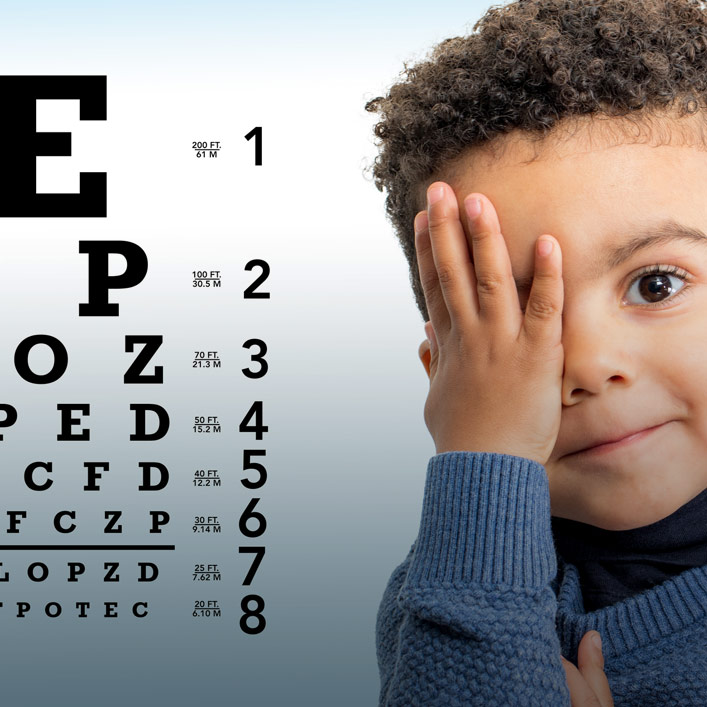
Do I need sunglasses in winter?
Sunglasses in winter are a must, says Dr. Cohen. The risk from the winter sun isn’t limited to glare that impedes driving.
A more general problem is ultraviolet (UV) radiation—which can impact eyes with surprising force when it reflects off snow and ice. When the sun reflects off the snow, it can send 85 percent of the radiation back at you.
Risk is heightened in children, whose lenses let in more UV rays, and in people with light-colored eyes who are more vulnerable to UV rays, too.
Chronic UV exposure to the eyes is linked to serious problems later in life, including cataracts and skin cancers in and around the eyelid.
Sunglasses offer nearly 100 percent protection against UV rays. Polarized sunglasses cut down on glare; lenses made of polycarbonate material won’t distort your vision; and cool wrap-arounds can eliminate sun coming in from the top and sides.
Come check out Yardley Eye Care’s designer sunglasses to fight the elements with elegance!

Are all red eyes “pink eye”?
A top patient concern is the sudden appearance of red in one eye or both eyes, and whether it signals an infection. “Pink eye,” or infective conjunctivitis, is an inflammation of the mucous membrane (conjunctiva) covering the front of the eye and lining of the eyelids. Pink eye can be either bacterial or viral. Another form of pink eye is allergy-induced, from seasonal allergies like hayfever or environmental allergens like animal fur.
People rightly fear how contagious the viral and bacterial forms are.
Pink eye is also super itchy, but other conditions that cause a reddish eye can also be itchy, uncomfortable, or concerning. Some of these include:
• dry eyes
• inflammatory conditions such as iritis
• scratched cornea – from rubbing your eye when an irritant got in
• chlorinated pool water
• stye – a bacterial infection in your eyelid’s oil-producing glands
• blepharitis – an inflammation of the eyelids
• shingles in the eye – a reactivation of the chickenpox virus (known as herpes zoster) involving the eye; herpes simplex virus Type 1 (which causes oral herpes) can also attack the eye.
Rather than play medical detective, it’s best to schedule an appointment with your optometrist who can evaluate your eye(s) and offer an appropriate treatment plan. It’s especially urgent to call your eye specialist if you have eye pain, intense redness, sensitivity to light, or blurred vision that doesn’t improve when discharge is wiped from the eye(s), according to the Centers for Disease Control and Prevention.
Depending on the cause of your red eye(s), your optometrist can prescribe the appropriate eye drops or ointments, such as antibiotics, steroids, or antihistamines, or recommend strategies like cold compresses and artificial tears. Contact lenses must also be avoided until a red eye clears up.

Any good tips to motivate my child to wear protective eye wear when playing sports?
According to the National Eye Institute, most eye injuries among school-age children are sported related. Basketball, ice hockey, baseball, softball, racquetball, field hockey, and lacrosse are sports that carry high risk of eye injury. Football helmets reduce risk in those players. Corneal abrasion, conjunctivitis, and foreign body in the eye are frequent sports-related eye injuries, according to a study published in the journal Pediatrics.
Until protective eyewear becomes the standard in certain sports, it’s important for parents to encourage their child to wear protective eyewear. The National Eye Institute spells out the right eyewear for each sport; your optometrist is a great source, too. At Yardley Eye Care, we have great protective eyewear carrying the label ASTM F803 approved, which indicates it’s been performance tested and is sturdy enough to withstand the impact sustained during sports. Letting kids choose cool sports goggles may motivate them to wear them, and showing kids pics of athletes wearing goggles may help, too!

My eyes get so dry in winter! Is it bad to use eye drops every day?
Dry eye is characterized by an itchy, irritated or burning sensation, or eyes that water excessively. Dry eye is a common condition, affecting people with and without vision issues. Older age is a factor, and women are more prone to dry eye than men are.
• Artificial tears may help a mild case of dry eye, but be sure to avoid redness-reducing drops that can make your problem worse.
• It’s best to schedule an appointment with an eye specialist to identify the cause and appropriate treatment for your dry eyes. Possible causes include: an underlying condition like an autoimmune disease; a tear duct malfunction; a medication side effect; or a simple modifiable factor in your home like the need for a humidifier.
At Yardley Eye Care, Dr. Cohen and his team can perform a comprehensive eye exam and, if necessary, run tests on your tear volume and production. Depending on the cause of your dry eyes, he can prescribe eye drops specific to your condition, whether it’s linked to inflammation or the need to stimulate tears. You may even benefit from a recently-approved nasal spray to treat dry eyes, or specialized contact lenses. Dr. Cohen will help you find the approach right for you that will provide lasting relief.

How do the new obesity drugs like Ozempic impact diabetic retinopathy?
Diabetic retinopathy is an eye condition that can cause vision loss and blindness in people who have diabetes. It happens when high blood sugar levels damage blood vessels in the back of the eye. As a growing number of people take the diabetes drug semaglutide, for either diabetes or weight loss, the sudden drop in blood sugar that occurs with this drug is being studied for its impact on a number of diseases.
An important study presented in November 2023 at the American Academy of Ophthalmology found that most people taking semaglutide do NOT develop diabetic retinopathy, and nearly 60 percent of those with advanced diabetic retinopathy experienced an improvement in their disease.
As always, it’s important to consult with your doctor on the treatment regimen right for you. In addition, maintaining a healthy weight through exercise is crucial, too. Obesity is linked not only to diabetic retinopathy but also to an increased risk of glaucoma and macular degeneration.

Are light-colored eyes more vulnerable to damaging UV rays?
People with blue, green, or hazel eyes are more vulnerable to the damaging effects of ultraviolet radiation (UV). They also experience more light sensitivity, known as photophobia, that makes it difficult to see or focus in bright light. Squinting in sunlight and eye fatigue felt with fluorescent lighting are signs of photophobia.
Greater sensitivity to light, and the damaging effects of UV rays, is due to having less pigmentation in multiple layers of the eye—and therefore less protection—in lighter eyes compared to darker eyes.
Extended exposure to sunlight, or reflected sunlight, has been linked to cataracts; macular degeneration; and photokeratitis, a temporary “eye sunburn” that can be painful.
Sunglasses can help people with all eye colors to protect them from UV radiation; anti-glare coatings on glasses can minimize the effects of fluorescent lighting for people who experience photophobia.

Is it okay to wear contact lenses while swimming?
No, wearing contacts while swimming can be dangerous. Ask your optometrist for prescription goggles if you must see clearly while swimming.
The American Optometric Association and U.S. Food and Drug Administration (FDA) recommend that contact lenses not be exposed to any form of water. An organism called acanthamoeba is present in all forms of impure water—swimming pools, lakes, hot tubs, and tap water—and can cause a rare sight-threatening infection called Acanthamoeba keratitis.
Other less severe eye infections that still warrant immediate treatment are also possible to contract by swimming with contact lenses. Chlorine doesn’t eliminate all pathogens, and contact lenses absorb the water and can trap bacteria, viruses, and fungi against your eye. Natural bodies of water, such as lakes, rivers, and the ocean are the riskiest as they’re full of pathogens.
Signs of an eye infection include: red eyes, eye pain, itchy eyes, teary eyes, blurry vision, eye discharge, swollen eyelids, sensitivity to light, or feeling like you have something in your eye. Besides an eye infection, you can also get dry eye, a corneal abrasion, or eye inflammation (uveitis) from swimming while wearing contact lenses.
See your eye specialist right away if you have any concerning symptoms.

Why do my eyes get red after swimming and which eye drops help?
Red, itchy eyes after swimming in a pool is referred to as “swimmer’s eye.” This condition is an eye irritation, not an eye infection which is more serious.
According to the Centers for Disease Control and Prevention, swimmer’s eye is mainly caused by exposure to “chloramines” in the water. Chloramines are chemical irritants that result when chlorine in pool water interacts with human matter like urine, sweat, and personal care products like deodorant. When you detect a strong smell of chlorine as you approach a pool, that’s chloramines, which are also released into the surrounding air.
Wearing goggles, keeping eyes closed under water, and flushing eyes with artificial tears upon exiting the pool are strategies to help prevent swimmer’s eye. Call your eye specialist right away when irritated eyes include other concerning symptoms such as eye discharge, swollen eyelids, blurred vision, or light sensitivity. This could signal an eye infection.

Do you perform LASIK surgery and how do I know it’s right for me?
A type of laser-assisted surgery that changes the shape of your cornea, the clear covering of the front of your eye, is called LASIK surgery. It’s designed to correct refractive errors of the eye. Refractive errors are not eye diseases but rather a vision problem where it’s hard to see clearly because your eye keeps light from focusing correctly on your retina. More than 150 million Americans have a refractive error, according to the National Eye Institute. These include:
• nearsightedness (myopia) – far-away objects look blurry
• farsightedness (hyperopia) – nearby objects look blurry
• astigmatism – far-away and nearby objects look blurry or distorted
• presbyopia – difficult for middle-aged & older adults to see things up close
Dr. Cohen is one of the area’s foremost experts on refractive surgery. He has assisted in the training of many surgeons in this field, has published several articles in peer-reviewed journals, and has lectured extensively.
Dr. Cohen will determine if you’re a candidate for LASIK surgery through a comprehensive eye exam. He’ll also talk you through your questions as you weigh your decision. If you’re a candidate, he’ll refer you to an eye surgeon and then co-manage your recovery with your surgeon. Generally, LASIK surgery is most appropriate for people younger than 50. Refractive errors in older people are most often corrected with eyeglasses or contact lenses.

Does reading in dim light worsen your vision?
Reading in dim light won’t cause vision decline. But it’s likely to tire your eyes. It’s best to position a reading light close to your book so that it shines directly onto your reading material.

What age do cataracts form and can I prevent them?
Cataracts are the leading cause of vision loss in the U.S. A cataract is a clouding of the lens of the eye, resulting from a change in the lens’s composition that alters its structure. The clouding impedes light rays from passing through the lens to the retina, hindering your eyesight.
Rarely, cataracts are present at birth, known as congenital cataracts. Cataracts are usually linked to advancing age and can start developing by age 40. In its early stages, eyesight may grow worse so slowly that it’s tricky to recognize a problem. Cataracts can also develop as a result of diabetes or a traumatic injury involving one or both eyes.
Cataract prevention involves avoiding risk factors for the disease, including smoking, excessive sunlight exposure (wear sunglasses and a hat), extended steroid use, and excessive weight gain. Eating a diet rich in dark green leafy veggies, which contain lutein and zeaxanthin, and fruits containing vitamin C may also help, according to recent studies.
Symptoms of cataracts include: dull and blurry vision, lights that are too bright or give off a halo, poor night vision, double vision, increased nearsightedness, colors that seem faded.
If you suspect you might have cataracts, Dr. Cohen can diagnose your condition by using a visual acuity test and a close-up exam of your retina with a pupil dilation test. Depending on your stage of disease, he may update your eyeglass prescription or put anti-reflective coating on your lenses, or refer you to an ophthalmologist for cataract surgery.

Is there a strategy for managing a floater?
A floater is a spot, squiggly line, or fleck that appears across your line of vision. This drifting shape is usually nothing more than a nuisance of growing older. Floaters strike more commonly after age 50 and occur when a clump of gel forms in the fluid in front of your retina; the clump throws a shadow onto the retina. A floater usually clears up on its own as it breaks apart or settles. Still, it’s important to consult your eye specialist whenever a floater appears, especially if it noticeably increases.
Occasionally, a floater involves gel detaching from the retina, and tearing the retina, which is why it’s crucial to consult an eye specialist when a floater suddenly appears. This type of serious floater is more common if you’re very nearsighted, diabetic, or have had cataract surgery.
When floaters are the result of normal aging and affect your central vision, they can sometimes be dealt with by moving the eye up and down or left and right, to shift them out of your line of sight temporarily.
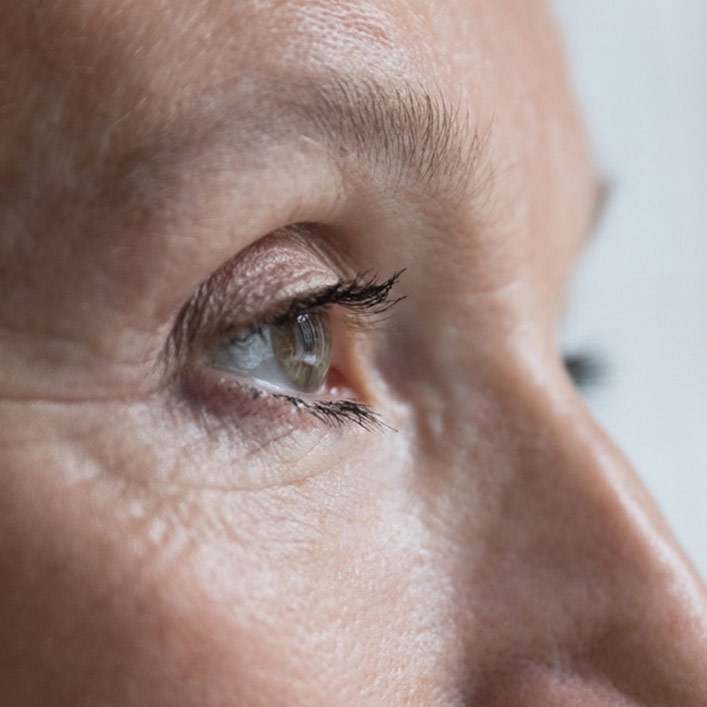
Are contact lenses right for me and what can I expect from a fitting?
Over 45 million Americans wear contact lenses. Contact lenses are a safe, effective vision correction option, and yet the Centers for Disease Control and Prevention estimate that up to 99 percent of contact lens wearers report at least one behavior that increases their risk for a contact lens-related eye infection.
To keep our patients on track with safe behaviors, our team at Yardley Eye Care ensures that you wear and care for your contact lenses properly through a helpful training session that accompanies your initial evaluation for contact lenses. Here you can expect:
• a comprehensive eye exam to determine your prescription
• questions about your lifestyle to determine which type of contact lens is best for you
• fitting that involves taking measurements of your eyes—the pupil, iris, and curve and diameter of your eye
• extensive teaching to show you how to put the lenses in and take them out and how to care for them; we’ll quiz you in engaging ways to make sure you have absorbed the key takeaways
• trial pair for further practice before ordering your lenses
• follow-up visits
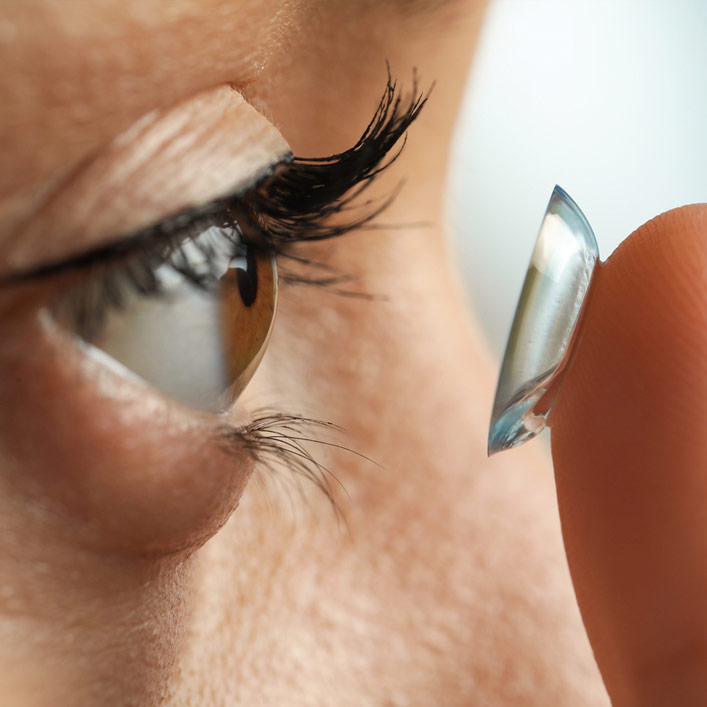
Are sparklers safe for kids?
Fireworks are spectacular, but it’s best for your family to watch a public fireworks display this 4th of July.
According to a recent report by the U.S. Consumer Product Safety Commission (CPSC), over 10,000 people were treated in the Emergency Room in 2022 for fireworks injuries—most of the injuries occurred on the holiday. Children younger than 15 years of age accounted for about 30 percent of the injuries. The eyes, head, and hands were the most injured body parts.
Disturbingly, the CPSC report also found that over 40 percent of the fireworks sold in the U.S. contained illegal components that were extra hazardous. Bottle rockets are an obvious danger, but sparklers can also be risky even if they don’t contain illegal components. Sparklers burn at temperatures of about 2,000 degrees Fahrenheit, and the sparks can cause burns and eye injuries.
“Always keep children far away from fireworks, including sparklers. We want everyone to have a fun and safe celebration,” says CPSC Chair Hoehn-Saric.

What’s a comprehensive eye exam versus a contact lens eye exam?
A comprehensive eye exam is an in-depth vision and eye health exam. It’s recommended yearly for adults to keep prescription strength up-to-date and to catch any developing eye disease. For children, a comprehensive eye exam is recommended before age 1, at age 3, age 5, and then yearly after that. Following this pediatric schedule is crucial to support kids’ developing vision, to detect any problems and prevent lifelong problems if left untreated, and to help children thrive in school.
In a contact lens exam, we only test for visual acuity and glaucoma; perform a tear film evaluation; and then take measurements of your eye surface and pupil for the contact lens fitting. Visual acuity is determined when you read the smallest letters you can read on a standardized chart held twenty feet away. The results of this test determine your prescription strength. The measurements of your eye surface and pupil determine the proper curve and size of the contact lens that will work best for your eyes and correct your refractive error (nearsightedness, farsightedness, astigmatism, or presbyopia).

What are the benefits of prescription sunglasses?
Yardley Eye Care offers a wide selection of sunglasses that are suitable for prescription lenses. Our team is here to help you find the right frames for your lifestyle and personality that will protect your vision and look stylish.
Here are the main benefits of prescription sunglasses:
• Convenience — If you’ve ever found yourself outside trying to read on a sunny day—whoops! You grab your shades to put over your glasses, and then fumble to read. Wearing prescription sunglasses means your vision remains sharp regardless of shifting conditions.
• Proper UV protection – Although cheap sunglasses can be stylish, they don’t always provide proper UV protection. Remember: UV protection year-round is key to prevent cataracts, macular degeneration, and skin cancers in and around the eyelid. People with light-colored eyes and kids are more vulnerable to the effects of UV radiation.
Yardley Eye Care’s full range of stylish prescription sunglasses are available in either polarized lenses or photochromic lenses that adjust as you move from light to dark. Photochromic lenses serve as both sunglasses and regular glasses.

What is macular degeneration?
Age-related macular degeneration (AMD) is a leading cause of vision loss in people 50 years and older. Besides age, other factors linked to AMD include: family history of AMD, smoking, obesity, and high blood pressure.
In this disease, a gradual thinning of the part of the retina called the macula causes you to lose your central vision. Your peripheral vision remains intact but your vision will become blurry without your central vision. You can’t see fine details, whether you’re looking at something close up or far away.
There are two types of this disease, known as dry and wet macular degeneration. Most people have the dry type.
At Yardley Eye Care, we diagnose macular degeneration through a comprehensive eye exam. For the dry type, we’ll prescribe a new medicine to treat it. A combination of nutritional supplements may also be appropriate, and we’ll advise you on this specific research-backed regimen. If you’re diagnosed with wet macular degeneration, we’ll prescribe a medicine to help stop the abnormal blood vessel growth in the macula contributing to it. We may also refer you to an eye surgeon for laser surgery.
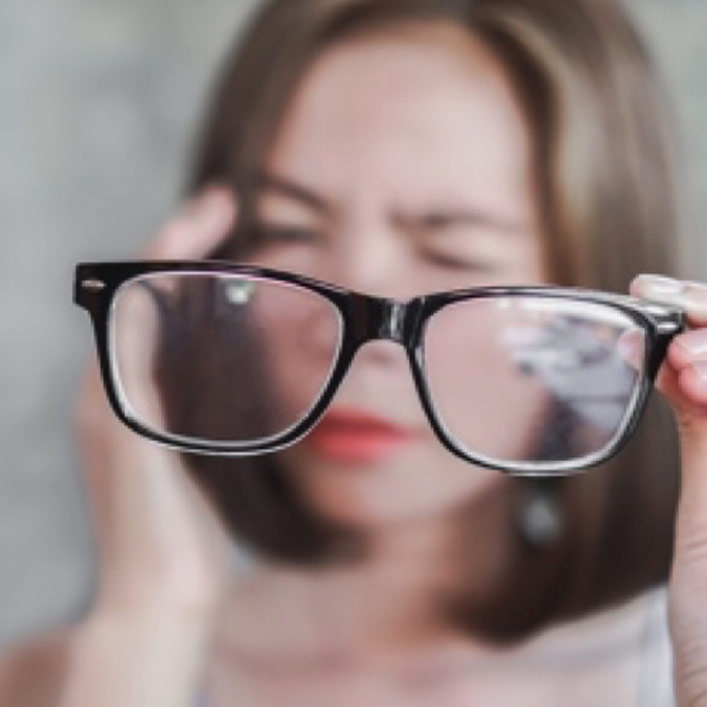
What is glaucoma?
Glaucoma is one of the leading causes of irreversible blindness in this country. The only way to slow the disease and prevent vision loss is through early diagnosis with a comprehensive eye exam.
The good news is that while there’s no cure for glaucoma, effective treatment is available. The bad news is that without early diagnosis and treatment, rates of glaucoma are expected to increase 100 percent by the year 2050, according to the latest data from the Centers for Disease Control and Prevention.
Glaucoma is tricky because it’s often “silent,” without symptoms, early on. Fifty-percent of people don’t even know they have it. The disease tends to develop in people ages 60 and older; a family history of glaucoma increases risk. Here’s what occurs: The fluid inside your eyeball builds up due to a drainage malfunction; the pressure inside your eye then damages the optic nerve. In rare cases of glaucoma, patients have sensitive optic nerves that become damaged even with normal fluid pressure.
One big reason why annual eye exams are recommended is to catch glaucoma in its early stages, when prescription eye drops can help to prevent optic nerve damage. More advanced cases of glaucoma warrant other treatments, such as laser therapy and surgery.
Bottom line: Schedule your comprehensive eye exam to protect your vision!

What are the different types of prescription lenses?
Choosing your frames are the fun part. The next decision about proper lenses are based on your prescription and sometimes your lifestyle.
At Yardley Eye Care, our team will perform a comprehensive eye exam to determine the type of lens and strength you need.
Here are the types of lenses:
Single vision – the most common type prescribed. These lenses help you see one distance: near, intermediate, or far away. If you only need help while reading, or seeing a movie theater screen or reading street signs, these lenses are right for you.
Progressive – appropriate for those who struggle to see at multiple distances, including intermediate. These lenses allow you to see clearly without having to take your glasses off or swap them out for a different prescription.
Bifocal – these lenses allow you to see clearly up close and far away but not at an intermediate distance. If your vision is good only at this intermediate distance, then these lenses might be right for you.
Active – these lenses are often prescribed for children and those who live an active lifestyle. The lens is thinner and lighter than traditional lenses, yet is more durable and less likely to break if dropped or stepped on.
High Index – these lenses are the new answer to the “thick glasses” look for people who need a strong prescription. Bulky glasses no more! These thinner, lighter lenses work with a strong prescription.
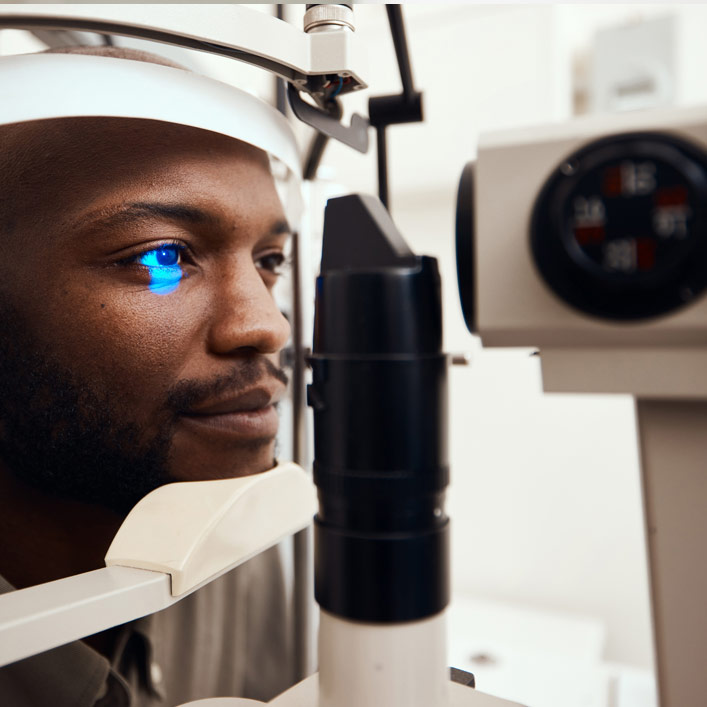
Toy Safety & Eye Injuries
A child’s world is awash in toys. Unfortunately, many popular toys pose a hazard to children’s eyes and these toys often show up around the holidays, birthdays, and other gift-giving occasions. Such toys include:
• slingshots, dart guns (even those with foam tips), water balloon launchers, and other projectile toys
• drones with spinning rotators
• light sabers, wands, and anything kids use to play “laser tag”
• toys with rough or sharp edges
• toys with antennae
Eye injuries range from a scratch to the eye’s surface (corneal abrasion) to serious sight-threatening injuries like bleeding inside the eye and retinal detachment. According to a 2024 report by the U.S. Department of Health & Human Services, eye injuries are the most common cause of permanent vision loss in children younger than age 5, and kids account for one-third of all emergency department eye injury visits.
It’s important to keep younger children away from older kids playing, to make sure kids don’t play with sticks, branches, and stones, and to caution young children about using crayons, pencils, and pens safely.

Does a lot of screen time impact my child’s vision?
Conventional thinking holds that prolonged screen use (2 or more continuous hours) is linked only to eye strain and not to permanent vision damage. “Computer Vision Syndrome” refers to a screen-induced eye strain characterized by headache, tearing, blurry vision, redness, pain, and dryness.
Yet an update in our thinking about digital devices may be needed.
Emerging research shows that excessive screen use may contribute to the worldwide spike in myopia now seen in children. When kids are on their devices, two problematic behaviors occur: Kids stare at their screens without giving their eyes a break (prolonged staring at up-close images alters eye growth) and they spend too little time outdoors flexing their long-distance vision.
With the weather getting nice, it’s important to nudge your kids to play outside—for the sake of their vision among other health benefits! Early vision screenings are also key to detect and manage myopia. For both kids and adults, it’s important to remember to blink frequently when staring at a screen and to practice the 20-20-20 rule: Every 20 minutes, look at something 20 feet away for 20 seconds. The computer screen should also be kept at arm’s length distance and straight in front of your face with the center of the monitor about 5 inches lower than your eyes.



